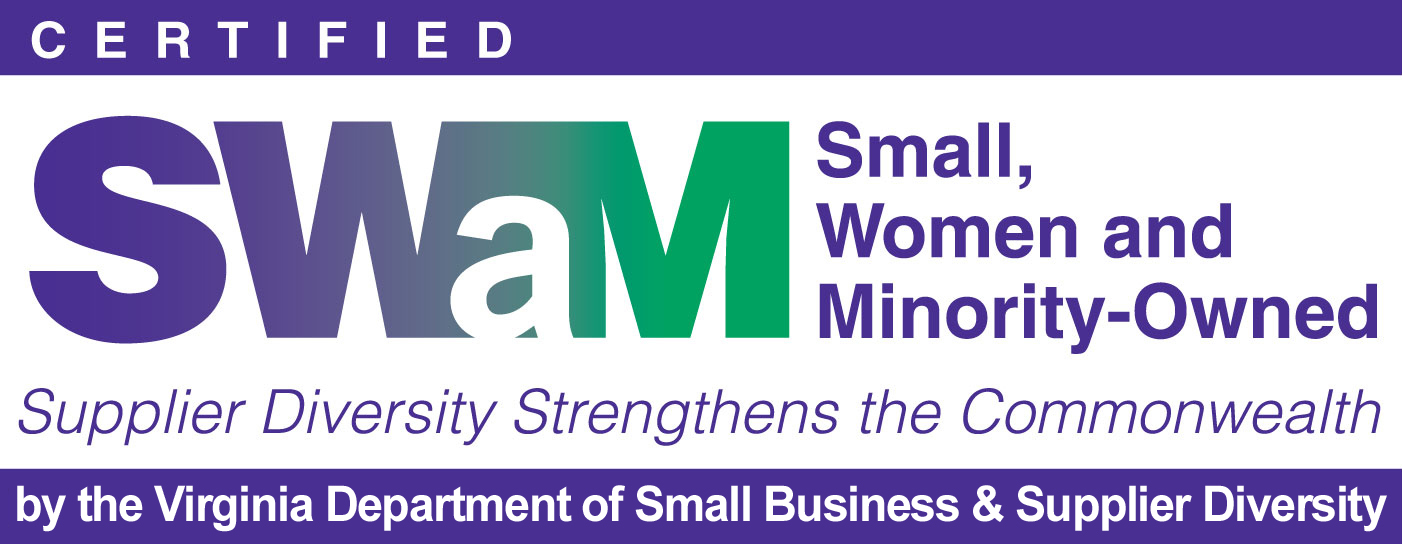Ways to Measure Your Professional and Business Growth
By: Randi Cairns
It is quite easy to convince yourself that you need to be fully engaged and involved on every social media platform. That you need to follow every marketing expert out there. That you need to measure All. The. Things. There are two problems with that strategy: First, you don’t have time to do all that AND successfully run your business. And second, not every tool, trick, and measurement are relevant to all businesses—or even to your business all the time.
Of course, you want to be able to measure your business growth. But how do you do that strategically and in a way that results in useful information?
Decide what you will measure. Your options may feel overwhelming. There are metrics for pretty much everything—engagement, performance, retention, traffic, reach—you name it. Is information power? Yes. Is it also potentially crippling when you’ve got a million data points and no idea what to do with them? Also, yes.
Start with your goals. What does success look like for you and your business? How can you know if you’re growing or stagnant? Sales? Revenue? New customers? Social media fans? Your answer won’t be the same as that of others in a different industry or at a different stage of their company’s existence.
What will your key performance indicators (KPIs) be? In other words, what will you measure that tells you how well you’re achieving your business objectives? If you’re unsure where to start, begin with revenue (what you’re bringing in after accounting for discounts and returned merchandise), customer acquisition cost (the amount you spent on marketing divided by how many customers that yielded), and marketing return on investment (divide your marketing spend by your revenue). These three metrics will show you if your marketing activities are impacting your bottom line or if you need to think about another approach. (more…)
20 Business Etiquette Tips
By: Lindsey Stone
In business, the way you behave strongly influences how others see your level of professionalism. Doing or saying the wrong thing can negatively impact your career more than you may realize. By understanding the influence of business etiquette and recognizing what matters most, you can set yourself apart professionally.
Tip #1: Be Aware. Names are one of the first pieces of information we learn about someone, and remembering someone’s name is more beneficial than you think. If you have trouble remembering names, try repeating the name back to the individual as you interact. Writing down a name and job title with some brief notes about the circumstances in which you met can help for future connections and references as well.
Tip #2: Use Your Full Name. Introducing yourself by your full name distinguishes you from anyone else the individual may know with your same name. In addition, knowing your full name will make it easier for others to find you after the meeting or conference on sites like LinkedIn so you can stay connected and build your network.
Tip #3: Be Mindful. Do not walk into someone’s office without announcing yourself. Imagine how you feel when someone walks into your office without notice and interrupts your train of thought or important business call. Remember, the perfect time for you to talk about something may not be the ideal time for someone else. Take a minute to send an email to find out what time works for both of you.
Tip #4: Know Who Pays When. If you invited the client or coworkers to coffee, lunch, etc. for a work meeting, then you should pay. It does not matter if it is a quick meeting or note, the tab is your responsibility when you invite others somewhere.
Tip #5: Limit “Thank You.” Being polite is important, but in the professional world, it is more about minding your p’s and q’s and less about making sure to say thank you consistently. One confident and sincere thank you is sufficient, but being overly thankful may make you seem insecure or insincere. (more…)
POWERHOUSE SERVICE & SUCCESS
Client Profile: Alpha Omicron Pi Foundation
Powerhouse Service Provided: External Communications
“Jessica Bertsch and the Powerhouse team fully exceeded our expectations by planning our #GivingTuesday social media campaign within a very short timeframe. The creative and conceptual designs were excellent, and we enjoyed working with Jess and her team. Thank you for helping us reach our #GivingTuesday goal and laying the groundwork for future social media campaigns!”
– Courtney Stafford, Director of Advancement, Alpha Omicron Pi Foundation
BUSINESS RESOURCES
Growth Resources
Measuring professional and business growth is one of those pesky chores that can be fun, can be painful, and can really help to point out areas where we are succeeding and areas that can definitely use some improvement. Remember that small businesses will, most likely, have growth spurts followed by long plateaus, so don’t be alarmed if your business/professional growth chart seems stagnant. Just make sure you can identify areas for improvement and focus on those.
Want an overall idea of how to measure professional growth? Check out Leigh Espy’s “7 Great Ways to Measure Career Success – or Signal It’s Time to Make a Change.”
Want specific tips on how to measure small business success? Forbes has some places to start.
Looking for growth strategies? Fundera has some ideas on strategies for small business success.
If you find you need some help bolstering an area of your business to ensure you reach your growth potential, check out the ways Powerhouse can help you be the most successful you can be.
GIVING BACK & GETTING INVOLVED
Bunker Labs: Empowering Military-Connected Entrepreneurs
By: Julie Kirchner
Giving back and making our communities better are fundamental elements of our Powerhouse culture. Through our “Share the Goodness” program, Powerhouse gives 10% back each year to causes that are important to our freelance team members and their communities. To inspire even greater impact, we love, love, love to highlight the goodness offered by a nonprofit organization so you can learn more, volunteer, and/or donate.
This month, I was truly excited to have the opportunity to share what Bunker Labs is doing for our military community of entrepreneurs. I first attended a “Bunker Brews” local networking event a year ago, and it was then that I witnessed the true spirit of community among entrepreneurial changemakers. I can still remember the host warmly welcoming us and quelling our nerves about the anticipation of networking: “You’re at a ‘networking’ event—literally EVERYONE here is excited to meet you!” Thus, an evening filled with uplifting conversation and motivational (and sometimes hilarious) stories from successful local entrepreneurs ensued. Everyone left the brewery that night with an expanded LinkedIn network of like-minded friends and a few new great insights to power the workweek.
Bunker Labs is a nonprofit 501(c)(3) organization that seeks to serve veterans and military spouses on their entrepreneurial journey. According to the Bunker Labs website, 25% of transitioning service members want to start a business and desire the support to help them successfully launch one. With a coast-to-coast network of local chapters throughout the United States, Bunker Labs provides the military-connected community the networking support, tools, and resources needed to successfully start their own businesses—and these services are free of charge.
We recently caught up with Kirby Atwell, CFO of Bunker Labs, who was a member of the very first cohort to go through Bunker Labs in 2014 when it had just started. Back then, Bunker Labs was a mastermind group of 30-40 Chicago-area entrepreneurs who met weekly to support each other’s work on building their businesses. Atwell shares, “This was a tremendous help for my business, so I knew I wanted to be a part of this mission in the future. I stayed involved and volunteered in different capacities for a few years and then joined the staff as the COO (and eventually the CFO) in 2017.” (more…)
20 Ways to Measure Your Business Growth
Management thought leader and author Peter Drucker once wrote, “Management is doing things right; leadership is doing the right things.” Recent research has suggested that many entrepreneurs chose the path they did because they desired one thing—meaning. How can we lead our businesses in measurable and meaningful ways, without getting lost in measuring and focusing on things that don’t really matter?
Check out these 20 ideas we’ve put together to help you assess your growth as a business owner and freelancer.
1. Meeting real needs.
You can be growing, but you can also be growing in a direction that no longer meets the needs of the clients you serve. One way to measure your business growth is to compare it to actual needs of your community and customers through regular needs assessments.
2. Benchmarking.
Are you growing relative to similar businesses in your field? What other businesses out there provide services like yours, and how are you different or the same?
3. Leads and referrals.
Tracking the number of new leads and referrals you have each month can give you helpful insights into patterns. Asking these leads how they heard about you is another opportunity to learn what’s working well and possibly whom to thank for referrals.
4. Ratings and recognition.
Higher customer ratings are correlated with increased business. Regularly review your ratings, whether on Google, Yelp, or any other online customer reviews. Looking at ratings and reviews over time can indicate whether you’re growing in a positive direction in the eyes of your customers. Another way to measure growth is being recognized as a leading business in your community or industry, such as applying for and achieving a widely known business recognition, distinction, or seal of integrity that you can display in your marketing.
5. New clients.
If people are knocking on your proverbial door to do business with you, chances are you’re doing something right by offering a needed service and having positive word-of-mouth marketing from your existing customers. Learn more about them and what brought them to your business.
6. Loyalty.
Repeat business and contract renewals are an important aspect of sustainable business. What percentage of your customers would you consider loyal or repeat customers? These are important relationships to nurture, as loyal clients make great (free) marketers who will often happily test-drive new products and services and can even provide the most helpful insights to improve your overall business strategy.
7. New hires.
New team members can be an indicator that you’re ramping up to meet increased demand or growing services and that your company is perceived as a desirable place to work.
8. Retention and engagement.
Measure the average length of time team members stay on board with your business. Retained team members are usually a good indicator of employee satisfaction, a great culture, and successful leadership.
9. Employee growth and development.
One sign of business growth can be found in a measure of your employees’ growth, which is now a well-known factor in employee engagement. If your team members are gaining desirable skills, that development along with their high engagement level can tremendously benefit the growth of your business.
10. Profit.
One sure measure of growth is reflected in your business’s bottom line. If work is plentiful, you should ideally see a reflection of that in your profits.
11. Diversification.
One way to gauge your growth is in terms of sustainability. For example, your efforts in strategic diversification of products, services, or geographical areas served can help you avoid localized impacts. You may also have identified opportunities for growth work or add-on services that will help further solidify your income.
12. Online reach and engagement.
Reviewing your website analytics can give you a picture of your customer reach and engagement over time and relative to certain marketing campaigns. Using trackable links is another great way to see ongoing performance of marketing efforts. If you manage social media pages, you can measure followers, post engagements, and shares. (Here’s an article with great ideas for engaging your social media followers.)
13. New partnerships.
Partnerships are a great measure of business growth because together you are working to provide more or better services to clients or to better streamline the services you provide by cross-referring customers. Tracking the number of business partnerships you have this year over last year could be a good measure of growth.
14. Shareholders.
New investors, funders, active board members, and increased employee giving or board-member giving are great ways to measure others’ confidence in your company or cause and to track growth in that confidence level over time.
15. Expanded services.
Reflect on the number of ways you successfully expanded products, programs, or services in the past year(s) to meet customer needs.
16. Focus and efficiency.
You’re experiencing a kind of growth when you’re seeing better productivity and efficiency along with a more streamlined focus—where there is decreased effort in combination with increased output.
17. Reduced costs.
If you are proactively identifying ways to reduce overhead costs or leaks from ineffective practices, that’s a measure of growth. Effective planning can also help reduce costs, and your strategic planning activities are another aspect of your business you can capture and measure over time.
18. Customer satisfaction and issues resolution.
It directly impacts your bottom line, so you’ll want to ensure systems are in place to measure customer satisfaction and seek feedback often, resolving any issues quickly. Issues resolution is another activity you can track and measure over time to look for indications of growth and improvement in that area.
19. Increased demand.
An increase in demand for your products or services may be a positive indicator that you’re meeting customer needs well and that you have effective marketing efforts in place. Taking steps to understand where the new demand is coming from can help you with future performance.
20. Charitable giving.
A positive, meaningful way to measure your business growth is in how much you are able to give back to the community through charitable acts of giving or volunteering by you and your team.
If you’re looking for ways to take your business to the next level, we have a Powerhouse resource devoted entirely to helping you achieve that. To check out all of our “20 Tips” resources, check out our Powerhouse Resources page and follow us on Facebook.






